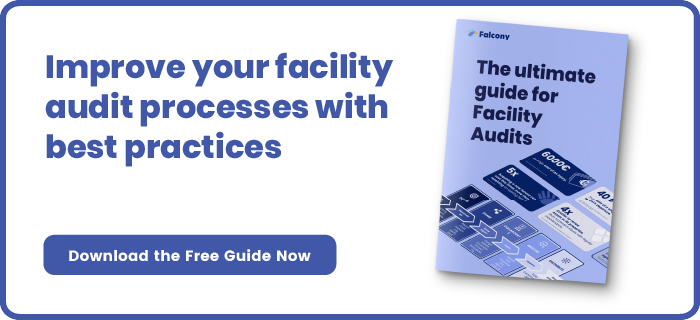How to Involve Staff for Preventative Maintenance?
Preventative maintenance (PM) is a crucial strategy in any organisation that seeks to enhance operational efficiency and extend the lifespan of equipment and facilities.
While many companies invest in tools and technologies to implement PM programmes, the success of these initiatives often hinges on one critical factor: employee involvement. Involving staff not only fosters a culture of responsibility but also leverages their unique insights and experiences. This blog outlines effective strategies to encourage staff participation in preventative maintenance.
Educate and Train Employees
The foundation of any successful preventative maintenance programme is education. Employees need to understand the importance of PM and how it directly impacts their work environment. Conduct training sessions that explain the principles of preventative maintenance, its benefits, and the specific roles employees play in its implementation. Providing practical, hands-on training can empower staff to recognise maintenance needs and perform basic tasks, enhancing their confidence and competence. Additionally, ongoing training should be offered to keep employees updated on new technologies and best practices, reinforcing the idea that their involvement is integral to the programme's success.
Foster a Culture of Open Communication
Encouraging open communication is vital in promoting a proactive approach to maintenance. Create channels for staff to voice concerns, suggest improvements, and report issues without fear of repercussions. Regular meetings, suggestion boxes, and digital platforms can facilitate this dialogue. By fostering an environment where employees feel valued and heard, organisations can harness valuable insights that may otherwise go unnoticed. It is also beneficial to encourage management to actively listen and respond to staff feedback, demonstrating that their contributions are taken seriously and can lead to meaningful change.
Establish Clear Responsibilities
Clarity in roles is essential for effective preventative maintenance. Define specific responsibilities for each staff member regarding maintenance tasks. Whether it involves conducting routine inspections, reporting irregularities, or participating in maintenance planning, clear expectations will enhance accountability. Job descriptions should reflect these responsibilities, ensuring that all employees understand their contribution to the PM programme. Additionally, developing a structured maintenance schedule that assigns tasks to specific individuals can help ensure that nothing falls through the cracks, promoting a sense of ownership among staff.
Encourage Team Collaboration
Preventative maintenance should not be a solitary endeavour. Encourage teamwork by creating cross-functional teams responsible for maintenance activities. Collaborative efforts not only distribute the workload but also foster a sense of camaraderie among staff. Team members can share insights, troubleshoot problems together, and collectively develop innovative solutions to maintenance challenges. Regular team-building exercises can further strengthen these relationships, helping to create a cohesive unit that is more effective in addressing maintenance issues and achieving common goals.
Recognise and Reward Contributions
Acknowledging the efforts of employees in preventative maintenance is essential for sustained involvement. Implement a recognition programme that rewards individuals or teams for their contributions to maintenance efforts. Whether through verbal recognition, certificates, or tangible rewards, showing appreciation can significantly boost morale and motivate staff to actively participate in PM initiatives. Establishing a system for tracking and celebrating achievements, such as a "Maintenance Champion of the Month," can create a healthy competitive spirit that encourages all employees to take an active role in maintaining equipment and facilities.
Utilise Technology to Enhance Involvement
Leverage technology to streamline communication and reporting related to preventative maintenance. Implement user-friendly software that allows employees to log maintenance requests, track tasks, and receive reminders for scheduled activities. This not only simplifies the process but also makes employees feel more involved in the maintenance cycle. Training staff to use these tools effectively can further enhance their involvement and ownership of the PM process. Additionally, consider incorporating mobile apps that allow employees to report issues on the go, making it easier for them to participate actively in the maintenance programme at their convenience.
Monitor and Evaluate Progress
Regularly assess the effectiveness of employee involvement in your preventative maintenance programme. Collect feedback through surveys or informal discussions to gauge employee perceptions and identify areas for improvement. Analyzing maintenance data can also provide insights into the impact of staff participation on overall maintenance effectiveness. Use this information to refine your approach and continue fostering a culture of involvement. By setting clear metrics for success and regularly reviewing performance, organisations can demonstrate the tangible benefits of staff participation, encouraging continued involvement and support for the PM programme.
Conclusion
Involving staff in preventative maintenance is not merely a strategy; it is a cultural shift that can lead to improved operational efficiency and equipment reliability. By educating employees, fostering open communication, establishing clear responsibilities, encouraging teamwork, recognising contributions, leveraging technology, and monitoring progress, organisations can create a robust framework for staff involvement in preventative maintenance.
Embracing this approach not only enhances maintenance outcomes but also empowers employees, fostering a workplace culture rooted in collaboration and continuous improvement. When employees feel invested in the maintenance process, the entire organisation benefits, resulting in a safer, more efficient, and more productive work environment.
Are you looking for a tool to enable, record and monitor quality processes in your organisation? Falcony | Platform ticks all the boxes for reporting, investigation management, is easy to customise, enables real dialogue and is a lot more.
We are building the world's first operational involvement platform. Our mission is to make the process of finding, sharing, fixing and learning from issues and observations as easy as thinking about them and as rewarding as being remembered for them.
By doing this, we are making work more meaningful for all parties involved.
More information at falcony.io.

Related posts
5 Ideas and Initiatives for Facilities Maintenance and Cleaning
Facilities maintenance and cleaning play a crucial role in ensuring operational efficiency,...
10 Essential Checklists in Facilities Maintenance and Cleaning
Effective facilities maintenance and cleaning are crucial for ensuring safety, efficiency, and the...
10 Key Points to Know About Mall Multiplexes
Maintaining a mall multiplex is no small feat. With thousands of visitors daily, a complex mix of...






